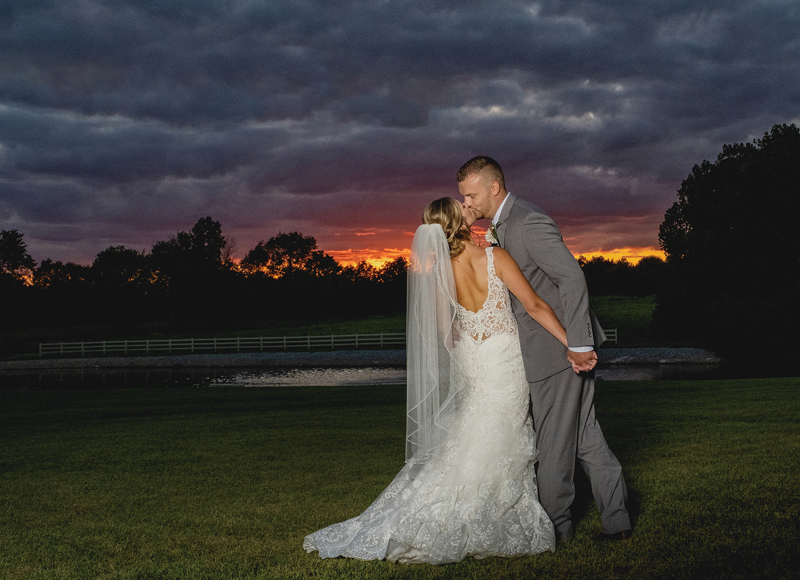Be Prepared for the Unexpected
By Cindy Dover
There is much more to photographing weddings than simply showing up with a camera. There are a number of unknowns to navigate on the wedding day, including schedules, locations, weather conditions, and interactions with various people. However, the timeline of the wedding day is the one aspect you can control and influence.
A well-developed timeline is one of the most crucial elements of a wedding, and, unlike some who will simply show up and “go with the flow,” I could never make myself do that. The timeline is created in collaboration with the couple, and if we’re fortunate, with the help of a wedding planner. When crafting the timeline, it is essential to consider how many hours you will be present. I typically start with the ceremony time and work backward from there.
If the couple agrees to a first look, we can capture all necessary shots before the ceremony. First looks are beneficial for both the couple and the photographer as everyone is fresh and less anxious before the festivities begin. When there is no first look, we have to schedule couple portraits, family shots, and bridal party photos after the ceremony. The problem with this is that it can detract from the bride and groom portraits, which are often overlooked even though they are the most important images of the event. This is why having a well-organized and detailed timeline is critical. It allows us to get through family and bridal party photos quickly. Because I adhere to the timeline, I do not go overtime, just as the DJ and caterer each operate on their own timeliness.
One thing I’m adamant about is capturing sunset images. Many venues I work with offer beautiful sunset views, which are special for couples because it’s their first sunset together. Therefore, I make a point to schedule time for the sunset and ensure we arrive at the right location. We set up two lights in advance before gathering the bride and groom. I also communicate the sunset time to the DJ to avoid scheduling first dances, toasts, and other events during that window. Sometimes it is necessary to pull couples away from their meals, but I’ve never heard a complaint about being photographed in front of a sunset. This also gives the couple a brief break from the hustle and bustle of the day. We gather their flowers and, if possible, unbustle the dress. The goal is to capture all the poses and shots within 15 minutes. My second shooter captures silhouettes while I focus on lit poses, using full flash power to bring out every color and detail in the sky. I often find myself lying on the ground to capture as much of the sky as possible and I do sometimes wonder how I’ll manage to get back up!
The poses I use are quick and simple because I can’t demonstrate them while lying on the ground. The bride typically holds her dress or veil, adding drama with the light coming through. The last pose has them looking at the sunset and pointing out their first sunset together. In the event that there is no actual sunset but only colors or darkness, I will capture images of the couple during the “golden hour” instead. I photograph the sky and create a sunset effect for them—after all, sky replacement techniques and AI can help!
Weather is one thing we can’t control but, as wedding photographers, we need to be prepared for any scenario. Look for a porch, gazebo, or any covered area that still evokes the feeling of the outdoors. I always try to remain optimistic about the weather, even when secretly preparing for the unexpected. Investing in umbrellas is a must! Some brides insist on outdoor photos regardless of the weather, so it is up to us to make it happen. Sometimes I will use umbrellas in the shots because they help tell the story of their day. If there’s a break in the rain, I quickly set up the couple and move the umbrellas aside. I keep an eye on the weather to seize any opportunity to venture outside. Yes, I may get a little wet, but I’m not there to look pretty. The worst thing to say to a bride is, “Rain is good luck on your wedding day.” She doesn’t care whether rain symbolizes fertility, cleansing, unity, renewal, or tears—she cares about her hair, her dress, and how things will appear in pictures.
While sunsets and golden hour lighting can add an artistic touch to wedding images, the reality is that most weddings occur in the middle of the day when the sun is at its brightest, and venues are often located on golf courses, in large fields, or on beautiful rolling hills. In those situations, shade is your best friend. But off-camera flash is your saving grace. Natural light is wonderful on overcast days but, unfortunately, those don’t occur often on wedding days. I usually have to choose between full sun or rain. Regardless, I always use a light because I want the backgrounds to be rich and true, rather than flat and washed out. I view the sun as a backlight or hair light that doesn’t require any setup, so I use it to my advantage.
Many photographers cringe at the thought of photographing weddings due to the unpredictable aspects involved. Some even say they “used to” shoot weddings. However, I view weddings as a joyful occasion filled with careful planning, and I aim to give couples the confidence they need to trust me to handle their day without worrying about the little details. I love the challenge that each wedding presents; it encourages me to try new things and constantly seek ways to improve for the next event.
She lives in Northern Kentucky on 111 acres which she calls her Outdoor Studio. Learn more about Cindy at CindyDoverPhotography.com.
